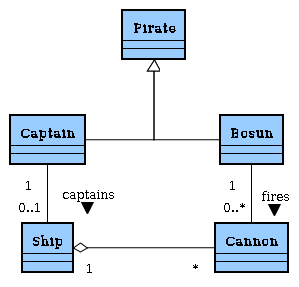Graphics applications have a wide variety of uses both for leisure and for industry. Whether it is for displaying information, designing houses, displaying animations or simulations, or designing graphical user interfaces. In this section we will describe the various types of graphics applications and give examples of their use.
Visualisation
Visualisation applications allow the user to view data in a way that is much easier to understand than text-based descriptions alone. Tables provide a more efficient way of relaying some information, such as experimental results, but they can still be difficult to read and glean useful information from. By creating visual representations of the data, the information it expresses can be seen in a form that conveys its usefulness quickly and in a form that is meaningful to the user. An example of this is the different between a table of percentages and a pie chart – the pie chart expresses its intent much more clearly because the reader can immediately see which sections are larger, and therefore the relative percentages.
Google Earth (http://earth.google.co.uk/) provides a good example of visualisation software by allowing the display of geographical data as 3D models. Geographical data is much easier to understand when conveyed pictorially because people try to envisage it as they would in real-life, even when it is presented as descriptive text. The 'All the Water' (http://david.tryse.net/googleearth/AllTheWater_360.jpg) visualisation is a good example of how graphics can convey information more easily by showing how large all the water on Earth would be if it were contained in a sphere. Presented as text this would be fairly meaningless to the average reader. There are lots of good examples of visualisation on the above website (http://david.tryse.net/googleearth/).
Visualisation is used a lot in commercial industry for conveying statistics and management data so that the reader doesn't need to understand how the data was arrived at, or the specifics of the original data. In this sense, the visualisation can be seen as an aggregation of the data, presented in a form that is easy for humans to understand. A good example of this is shares tracking – it is much easier to see how shares are performing using a visual chart than a table of numbers. Omniscope (http://www.visokio.com/omniscope) is a visualisation application of this type that analyses large sets of data and presents them in a visually attractive way that makes it more understandable and in a visually appealing way.
Visualisation is also used extensively in the medial and scientific professions. The data needing to be conveyed by doctors and scientists tends to be complex and practically impossible to express using text or tables. Examples of this type of visualisation are brain scans, electron microscope images and ultrasound scans which are generated by a computer then transmitted to the user using visual data. MetaLook (http://www.megx.net/metalook/) is a visualisation application for displaying DNA sequence information in marine ecologies (ie sea animals and fish). DNA sequences are extremely complex – MetaLook mitigates this by providing an interactive 3D view on the sequence that allows the user to select sequence fragments and inspect them in greater detail
Another, possibly more familiar, use for visualisation software is in software design. The concepts needing to be conveyed by the software designer are often abstract and difficult to describe. In order to rectify this, the Unified Modelling Language (UML) was created which enables the designer to model software in a way that can be conveyed to others. Applications, such as JUDE (http://jude.change-vision.com/jude-web/index.html) mean that designers can create visual diagrams of the design in a way that creates a concrete depiction of an abstract concept.

Figure 20.1 An example of a UML class diagram
Computer Aided Design
Computer Aided Design (CAD) applications are graphics applications that assist the user to create objects by representing them as 2D or 3D models. These objects can be extremely complex such as cars, molecules or prosthetics. They can be used to design 'real' (ie physical) objects, such as aeroplanes and ships, or 'virtual' objects such as computer game scenes or the special effects in films. Computer Aided Design is useful for designers of physical objects because it allows them to make changes easily, experiment and make mistakes with minimal cost and no danger to others. The models can also be used to convey the design to others – be that the prospective buyer of a house, or a robot for manufacturing cars – because the model can be changed easily but also specified to exact measurements
Possibly one of the best known CAD applications is TurboCAD (http://www.turbocad.co.uk/), a professional design application which allows the user to create 2D and 3D models for both architectural (buildings) and mechanical (engineering) design. The architectural edition is designed for architects, builders and civil engineers to allow the creation of architectural designs including walls, windows, stairs, roofs and different types of terrain. It also has advanced features such as lighting and realistic rendering to enable the designs to be as realistic as possible. The mechanical edition is designed for mechanical engineers and designers to allow the creation of mechanical designs such as engines. It includes features for designing and manipulating objects to enable the creation of complex mechanical designs
Although most Computer Aided Design applications focus on architectural or mechanical engineering, there are other uses for CAD with specific applications such as ship building (http://seatech.ru/eng/soft/seasolution.htm), printed circuit board design (http://www.expresspcb.com/index.htm) and fashion design (http://www.fashioncad.net/)
Simulation and Animation
Simulation and animation applications both involve graphics that appear to move. We say 'appear' because they are not actually moving, rather it is more like how a film works – lots of sequential images are shown in rapid succession so that they look like they are moving. When this applies to a computer application, the image seen by the viewer needs to be refreshed continually to give the appearance of movement.
Animation applications
Simulation applications
User Interfaces

No comments:
Post a Comment